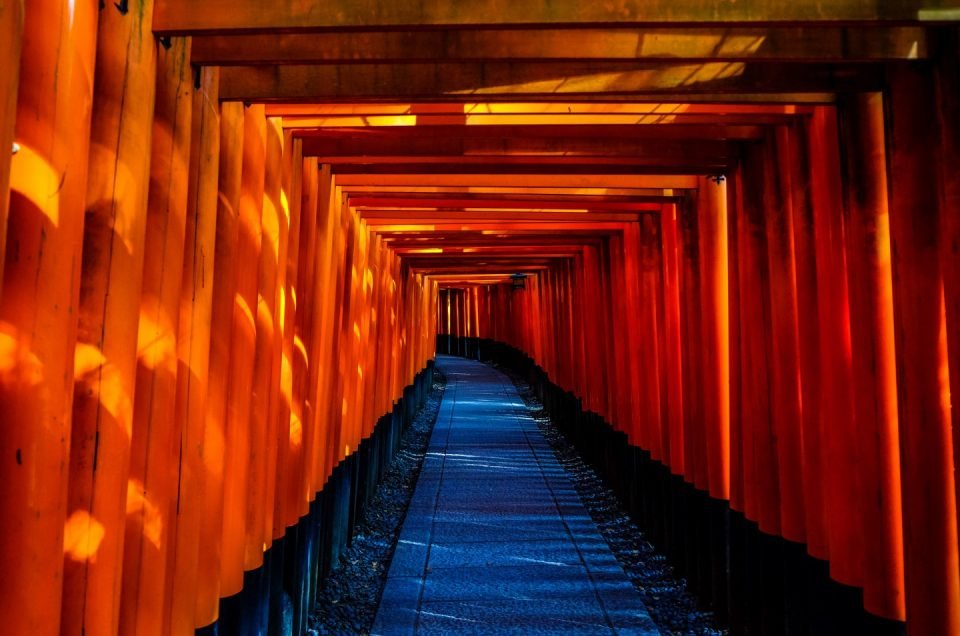Rice is nice.
“The dinner tray seems a picture of the most delicate order: it is a frame containing, against a dark background, various objects (bowls, boxes, saucers, chopsticks, tiny piles of food, a little gray ginger, a few shreds of orange vegetable, a background of brown sauce) and since these containers and these bits of food are slight in quantity, but numerous, it might be said that these trays fulfill the definition of a painting. … However, such an order, delicious when it appears, is destined to be undone, recomposed according to the very rhythm of eating… the painting was actually a palette… ”
Japanese cuisine is an incomparable semiotic wonderland. Not only on visual levels do signs and symbols have meaning but there is also an underlying cultural meaning about everything that is part of Japanese food. Of course to people who are not Japanese these can be hard to see and understand. It is often also the case for some Japanese people themselves who are unaware of the cultural and spiritual significance of certain foods and methods – more so for the younger generations.
As an outsider in Japan and looking in, one of the most amazing foods that I have encountered and thought about from a cultural and semiotic perspective is rice.
In Japan rice is a fundamental part, of not only Japanese cuisine, but as a part of Japanese culture as a whole.
It could be compared to the bread or potatoes of Anglo European Cuisine as it is the starch or the staple of the meal, but in Japan it means so much more.
A meal in Japan revolves around the rice and no meal is complete without it. The actual term in Japanese for rice ‘gohan’ has now taken on the meaning of ‘the meal.’ Asa Gohan (breakfast) translates literally to mean, morning rice. Hiru gohan and Ban gohan (lunch and dinner) again translate to noon rice and evening rice. But it is not only the act of eating rice that is important to Japanese.
There are temples that are dedicated completely to Rice. 30,000 of them in fact with the largest being Fushimi Inari Taisha, a spectacular shrine probably best known for its scenery in the film “Memoirs of a Geisha.”
Situated on the slopes of Inari- yama (Inari Mountain) the whole place consists of about 5 shrines in all. Dedicated to the gods of rice and sake in the 8th century Fushimi Inari takes more than 2 hours to walk around.
Along the path and around the shrines you can see numerous stone foxes, which are seen as sacred in Japanese society. The fox is said to be able to take on human form or possess humans by entering their body under the fingernails.
Many of the stone foxes carry in their mouths the key for the rice granary of the gods. The foxes are the Messengers of Inari – the God of grains.
In the eleventh century rice was seen in Japan as a luxury food as the commoners often had to make do with millet. In the film seven samurais examples of this can also be seen. Rice is also used to produce our favourite drink – sake, which in Japan, is not only drunk regularly, but used in many ceremonies and festivals. Legend is that the gods themselves used to make sake from the first rice harvest of the year and drinking sake brings you closer to spirituality and the gods.
Ask a Japanese person what their favourite food and more than often they will tell you it is rice.
Rice is eaten differently in Japan as culturally it has a different meaning than in other Asian countries. Rice (gohan) when in a small bowl on the table in Japan is meant to be eaten by itself. It is not mixed with other foods and food should never be served on top of rice unless it is an imported dish like ‘Curry rice’ or the Chinese dish ‘Chicken Rice.’ Rice is to be enjoyed by itself and be appreciated for its own taste.
In Japan rice also serves as a symbol of nationalistic pride. Japan never imports rice to sell on its domestic market. The Japanese Government will often purchase rice from Vietnam and stockpile it as a safety net or as source of aid for developing countries. Japanese rice really does taste different (as does different rice from different prefectures) and it has such a huge spiritual significance in Japan that the emperor still has his own small rice field.
Reference:
Barthes R, (1982) Empire of Signs, trans. Richard Howard, New York: Hill and Wang,
Richie D (1993) A taste of Japan. Kodansha International. Tokyo Japan





